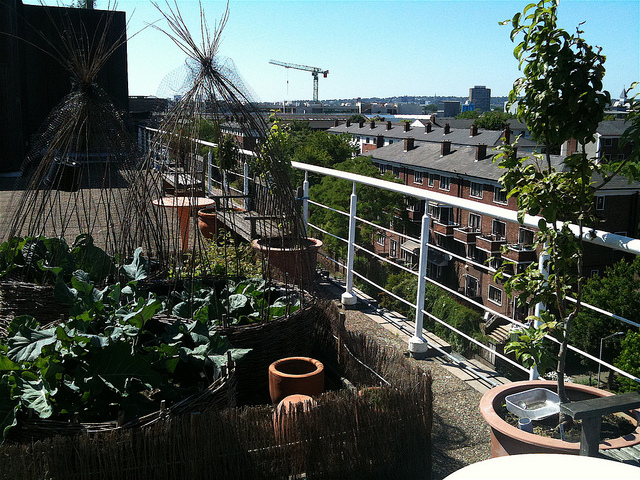As the green movement, including eating local, organically grown foods, increases in popularity; people want to have access to more fresh from the farm produce. In large cities this can be difficult. However, people have become creative with open spaces in order to begin a widespread urban farming movement. In some of the bigger cities across the world, rooftop farming has become a popular practice.
Types of Rooftop Farms
When deciding to become rooftop farmers, people have a few options of what type of farm to create. They can pile dirt on the roof and create a conventional garden or farm. There is a maximum amount that can be supported, as you have to plant according to the amount of weight the roof can hold and the available substrate level. Intensive roofs need support for 80-150 pounds of vegetation per square foot. A new technology makes it even easier to plant a farm on a roof: hydroponic vertical farming. This type of farming requires less land and water because the plants grow in pots with coconut fiber. However, it can grow healthier, more nutritious food and produce more food than traditional farming.
Benefits of Rooftop Farming
Urban farms have many benefits beyond just producing healthy, nutritious food that is grown locally. They also can be beautiful areas for people in the city to come and engage with nature while also providing a natural habitat for wildlife and bees. They absorb the rainwater that otherwise would collect on the roof. Furthermore, they can insulate the building and can even cut down on costs of running the building. Additionally, they are good for the environment. The green plants will help to reduce carbon emissions and put healthy oxygen back in the air. When you eat local produce, your carbon footprint is much lighter because the food does not have to travel far to get to you.
The Biggest in the World
As more and more farms sprout up in the bigger cities, there are a few farms that really stand out from the rest of the crowd. The Brooklyn Grange in New York City claims to be the largest in the world. It has organically produced vegetables and fruit, selling over 40,000 pounds of its two acres of produce to restaurants, CSA members and the public. Lufa Farms in Montreal has not let the extreme Canadian winters hurt its ability to grow food. It built a 31,000 square foot greenhouse on top of a two-story building to grow 40 different crops year round. It uses the irrigation system and energy from the building underneath to grow the crops. The world is trying to find its way back to a time where food was grown and purchased locally. Rooftop farming can help bring fresh, organic fruits and vegetables to the cities in a way that large grocery stores can never do. Rooftop farmers impart a great service to the cities, providing truly locally grown produce that also helps the environment and the citizens of the areas in which the farms are located. Image Source: Flickr/David Barrie

